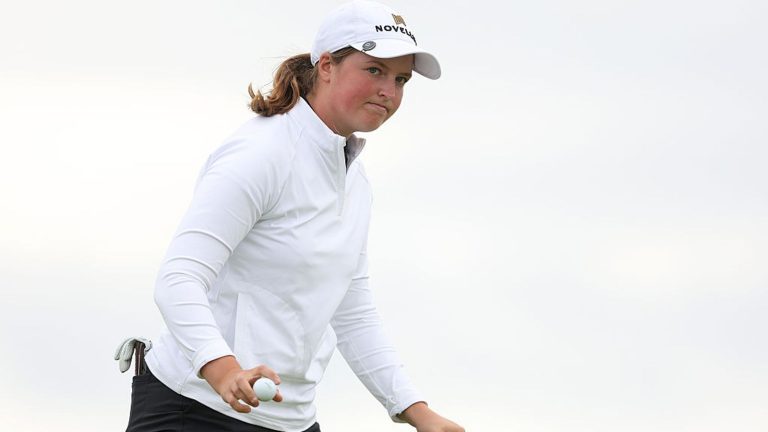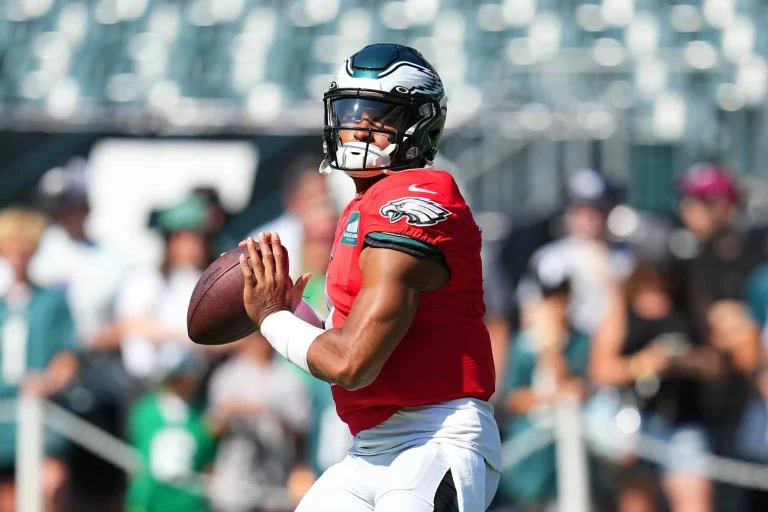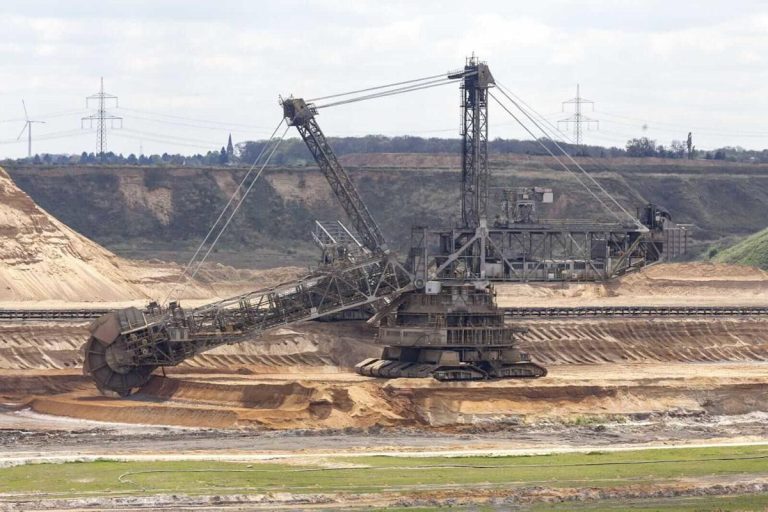It’s fair to say Round 20 of season 2025 hasn’t been one for the annals.
Seven games in, Carlton’s Thursday night loss to Hawthorn, in which the match was over before quarter time, is the closest margin: three games have been decided by 90 points or more, while a further two have been by ten goals or near enough to it.
We’ve had rivalry fizzers, yet more prime time slop, and unless you’re a fan of one of the victors and enjoyed running up the score on an outclassed rival, it’s yet another example of what has become a concerningly flat lead-in to September.
So naturally, with seven teams reeling from humiliation, the team that embarrassed themselves the most, the most undignified performance on a weekend full of misery, was once again North Melbourne.
The Kangaroos’ 101-point loss to Geelong, ‘just’ their second triple-figure defeat since Alastair Clarkson took the reins at the end of 2022, is as insipid a display as a side with any semblance of its best team on the park could possibly put out.
Sure, there was no Tristan Xerri, while Nick Larkey too was sidelined: but to be 106 points behind at three quarter time to a Cats team that both entered self-preservation mode halfway through the term and decided party tricks were preferable to really sinking the boots in is as pathetic as it gets.
Last year’s Round 24 loss to Hawthorn was a bigger defeat on paper, but this is the official nadir of Clarkson’s reign at the Kangaroos, which began with hope he was the saviour in August 2022 but which, nearing three years since he took the reins, has yielded 10 wins and a draw in 55 games.

Alastair Clarkson speaks to the North Melbourne players. (Photo by Robert Cianflone/Getty Images)
For all the club and the coach can preach for yet more patience from a supporter base whose resilience in watching their team be flogged routinely and relentlessly for the better part of a decade, it rings hollow given the Kangaroos decided to trade this year’s first-round pick to Richmond in exchange for the rights to a key position player in Matt Whitlock who has played one game for the season, even with Larkey now sidelined for half a month, even with a backline for which describing it as Swiss cheese would be an insult to the cheese.
Honestly, the kindest thing I can offer any Kangaroos supporter not broken by this latest humiliation is catharsis: a full autopsy of a night from hell, what it means for this club’s future, how much of it is Clarkson’s fault and how much rests on the shoulders of the players, and what can change to ensure this remains the full, official, final rock bottom, and not just the mirage of a bedrock under which there are new depths for this football club to sink.
But first, some comparisons: Richmond, who scorched their earth at last year’s trade period to an even greater extent than the Kangaroos did to begin their rebuild all those years ago, are somehow more advanced in three-quarter of a season under Adem Yze than North are in three under Clarkson.
They defend tenaciously, attack with vigour, and while their skill, strength and experience are all flaws good sides will and have exploited, there is an identifiable method to everything they do, with and without the football.
Going back a little further, GWS were also in the market for a new coach when Clarkson donned blue and white for the first time. Expected to face a long, hard journey back into relevancy, they’ve instead made a preliminary final, finished in the top four, and look on course to give the flag a proper shake in 2025 – all with a lesser haul of first-round draft picks, even now, than took to the field for North Melbourne on Saturday night.
Even further into the past, the one team consistently worse than the Kangaroos during their first real year of misery back in 2020 was Adelaide. The Crows lost the first 13 games of Matthew Nicks’ tenure, and it has taken until now for them to finish a season with a positive win-loss record.
Yet there is every chance a rebuild that began at the exact same time as North’s, and featured a far less stacked crop of top draft picks, is going to yield a grand final berth, or even a premiership, in the time it has taken the Kangaroos to finish exactly where they were back when their journey up was meant to start – 17th.
Naturally, North’s number one issue remains defending – it’s an area that, since Clarkson took over, they’ve somehow managed to get worse at since even the despair of the David Noble days, when they were still God awful but at least weren’t giving up scores of 150+ on quite so regular a basis.
It’s both an issue of supply and of structure. The Kangaroos’ midfield, featuring supposed elite talent of the likes of Luke Davies-Uniacke, Harry Sheezel and Tom Powell, top-10 draft picks all, puts on embarrassingly little pressure, and allowed Bailey Smith and Max Holmes to waltz out of the midfield with ease and drive the ball long and deep inside 50. Combined, they had 17 such entries and 19 score involvements.
High, hacked balls under pressure weren’t a thing at all at Marvel Stadium: the Cats, even with North players in their vicinity, had no hesitation in lowering the eyes, running the ball to the edge of 50, and looking to pinpoint a target. Mostly Jeremy Cameron (more on him in a second), but also Shannon Neale, Tyson Stengle, Brad Close, Patrick Dangerfield, Mark Blicavs, and everyone in between.
Conceding 27 marks inside 50 is a tally only West Coast have exceeded this season: for teams other than the wooden spooners presumptive, the worst in 2025 is 21. It’s also eight more than even this horrendous Kangaroos defence had previously given up this year.
But it’s difficult to feel sorry for too many of the North defenders – with the exception of Toby Pink, who was given the job on Jeremy Cameron while he already had five goals to his name, got zero help from further afield, and was duly made to look like the SANFL backman he was until two and a half years ago.
Griffin Logue is a mess: it’s one thing to do as Pink did and be comprehensively beaten in the air and on the ground by a superior opponent, but the former Docker’s effort on Cameron in the first half could barely be called defending.
I don’t know whether it was a conscious tactic from Clarkson, or just a complete lack of respect for the Coleman Medal leader from Logue, but in all of his three goals within the first ten minutes of the game Cameron was given between five and 15 metres of space – between five and 15 times the metres of space he needed.
See this goal from the pocket?
That came after Cameron led out to that spot, stood there for a good five seconds, and received the pass, all the while Logue stood 20 metres away guarding what he assumed to be the more dangerous space. As it turned out, to the surprise of no one other than himself, the most dangerous space was wherever the hell Cameron ended up.
Even worse, for both Logue and Clarkson, was to come shortly after.
Anyone who has watched a single Geelong match over the past three years knows Cameron’s trick play: at forward 50 stoppages, he will frequently come right up to the contest, attempt to drag a key defender with him, and then dash out the back to use his pace to devastating effect.
He completely fools Logue for his third goal – but the worst part of it is that the Kangaroos ‘defender’ not only lets him get away with it, not only sets up for the stoppage with Cameron already goal side of him – but at no point even has a token arm on the shoulder of the most dangerous footballer in the AFL, a man who had already kicked two goals on him within ten minutes.
You’ll notice on that scorecard that Cameron’s third goal gave the Cats the lead after the Roos, to that point, had acquitted themselves rather well, especially from stoppages.
There are worse problems for North than just Logue, though: the lack of structure behind the ball makes the task of any Kangaroos defender virtually impossible. Either they sag back and leave an acre of space between 20 and 50 metres out from goal for any half-decent forward to lead into, or they press up and let goals leak out the back. Such is the lack of pressure put on by those in midfield.
North critics will point to the Roos laying ten fewer tackles than Geelong on a night where they were beaten by 101 – but there are more ways to exert pressure than that. There’s corralling the ball-carrier, refusing easy passage out the front of stoppages, or forcing backwards handpasses that inevitably lead to high, hopeful balls forward that can be neutralised more easily.
There is just nothing even resembling that level of commitment at the Kangaroos: just look at this Gryan Miers goal from 50 after receiving a 50m penalty.
Sheezel, forced to stand the mark, at least has an excuse for not reacting fast enough: no fewer than four different Kangaroos all jog through the area Miers is about to run into to shoot, and all to a man sag even further back into no-man’s land, lacking the common sense that maybe leaving a 20-metre paddock of space for one of the AFL’s best kicks inside 50 won’t end well.
If even one of those four fills that space, then Miers is forced to kick long, probably to a contest, and then the other three can help create an outnumber and force a draw, a boundary throw-in, a rushed behind, or at worst, be legitimately outplayed by a contested mark. Three of those results are fine, and you could live with the fourth.
Even when they do force those high, long balls – in the below case, not because of any real pressure but just because Bailey Smith does high, long balls for a living – there is no cohesion, no teamwork, no structure present in how the Roos defend them, especially with Charlie Comben inexplicably starting this match forward only to be sent back when things got dire.
A functional backline can easily defuse this ball: at the drop zone, it’s effectively a three on two, with two of them in Tyson Stengle and Zane Duursma staying down. It just needs one of Wil Dawson or Comben to engage with Rhys Stanley and let the other fly in for an intercept mark – exactly what the Cats did for a living whenever the ball went down their end.
Here, though, Comben misjudges his read of the high ball, as does Dawson, who shunts Stanley under the drop zone but then can only tip the footy on. Comben actually ends up slipping over as Stengle, who Duursma has seemingly forgotten he’s supposed to be minding, gathers the crumb and snaps with ease.
That, in short, is how you concede 40 scoring shots from 77 entries – what’s even more concerning, though, is to be held to just three goals at three-quarter time despite a similar amount of disposals. Forget the four goals in the final quarter when the Cats had put the cue in the rack.
North, basically, have one avenue to goal: they’re the fourth-best team in the league at scoring from stoppages. Yet even that is a double-edged sword, because no team gives up more points from stoppages than the Kangaroos – but without the kamikaze, score-or-be-scored on approach, there’s just no way they can put any sort of total on the board.
North are dead last at scoring from turnovers this season – worse than West Coast, worse than Richmond – and third-last for getting scored on via them, with only the Eagles and Essendon’s VFL team giving up more than their 54.2 points per game (before Saturday night’s horror show) from them.
They don’t lock the ball inside 50 – they’re 10th in the AFL for tackles in the arc, and fourth-worst at scoring from their forward half. They’re in the bottom six for scoring from defensive 50, worst by some distance at percentage of possession chains starting in defensive 50 that end up inside 50, and worst at scoring from their defensive half.
Skill level is a big cause of this – the Roos still cannot find a decent ball-user in defence since Harry Sheezel was moved further afield, nor a running rebounder who can take the game on. They’re trying to make Colby McKercher that player – he certainly has the traits for it – but the truth is that while he’s quick and an aesthetically pleasing kick, his decision-making is abysmal even by North Melbourne standards.
His many, many turnovers, a great amount of which end in goals sailing back over his head, come only partly from missing targets – a significant chunk of them are from a lack of spatial awareness or an understanding that opposition players might want to cut off the kicks he is making.
This kick to young Zac Banch, for instance, would hit him lace out at training – but he seemingly hasn’t noticed Jack Bowes encroaching fast from behind. Sure enough, the mark is spoiled, and from there, the Cats have an outnumber, and it’s left to McKercher to forlornly chase Cameron as he runs into an open goal for his seventh.
McKercher still had 32 disposals and 505 metres gained on Saturday night. There’s a player there – but he’s also a big reason why the Roos not only can’t move the ball from one end to the other with anything like consistency, but leak so many goals from turnovers as well.
The truth is that a lot of this close analysis is as pointless as it is useless. It’s glaringly obvious why North Melbourne remain terrible, five years since they started being terrible, three years since the rebuild was meant to begin.
But anyone who thinks this problem is unfixable should look at Adelaide, whose leading backline distributor is a reject from Brisbane back in the days before they were any good, whose key defenders are an Irishman with 50 games under his belt, a wiry youngster and a 60-gamer two weeks back from a long-term injury. Yet they have no trouble getting the ball from end to end, defusing high balls, taking intercept marks and in general doing all the things a great defence should.
That North are still a rabble is an indictment on Clarkson more than any of his individual players. This club has paid him a small fortune to turn this ship around – yet on a bigger mandate and with far more promise than, say, Paul Roos when he took the job at Melbourne, he has added zero defensive steel, and in 55 games it’s still impossible to say what the Kangaroos’ game plan is beyond winning the ball at stoppages and riding that wave all the way home.
Losses like this long ceased to be acceptable. And unless something radical changes in the final four weeks of another miserable season, the question will no longer be whether Clarkson can turn this ship around: it’s whether the board that patted themselves so heartily on the back when they appointed him will have the gumption to decide when enough is enough.






